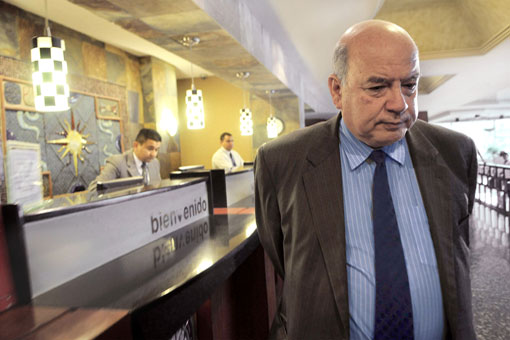Within hours of the terrorist attacks on September 11, 2001, the General Assembly of the Organization of American States (OAS), meeting in Lima, adopted by acclamation the Inter-American Democratic Charter—a bold manifesto that inched past the jealously guarded concept of national sovereignty to declare with unprecedented clarity that all people in the region have the right to live in democracies, a right all 34 member states pledged to collectively defend.
That fateful day marked a new level of cooperation and unity in a hemisphere more traditionally defined by political and ideological divisions. “They can destroy buildings, they can kill people, and we will be saddened by this tragedy. But they will never be allowed to kill the spirit of democracy,” proclaimed then-U.S. Secretary of State Colin Powell, who had delayed his departure for Washington that chaotic morning until after the crucial vote could be taken.
Thus two disparate events, one born of hatred, the other a noble expression of shared human dignity, were linked. César Gaviria, then-OAS secretary general, would later call September 11 “an anniversary of both horror and hope.”
It is difficult to imagine that kind of cooperation today. Since 2001, the hemisphere has evolved in ways inconceivable a decade ago. And by almost any measure, the hope Gaviria saw in the Charter and the OAS’s role in implementing it has not been realized. The Charter has proven more effective on paper than in reality, while the OAS has lost so much prestige and power that questions have arisen throughout the hemisphere about its relevance.
The organization’s severest critics have all but given it up for dead, and many who work there admit they are dispirited. “This ship is going down,” said one senior official who, like others I spoke to, insisted on anonymity. The situation the OAS finds itself in is not entirely of its own making, but it has been made worse by questionable decisions by Secretary General José Miguel Insulza, by the inconsistent application of policies, by mounting budget nightmares, and by structural weaknesses, including shortcomings in the Democratic Charter itself.
Although critics argue the organization has lost its purpose, many operations remain strong and vital, particularly its electoral observation missions and the autonomous Inter-American Commission on Human Rights. And despite the emergence of other groups, such as UNASUR, the OAS is still the only regional body that includes the United States.
Still, the OAS clearly does not occupy the place in the hemisphere that it did 10 years ago. The question is why. Is it the way the OAS is structured, the way it is led or the way it reflects the region it represents? The answer to these questions is important for the future of the region, and for the OAS itself.
Overburdened or Just Poorly Managed?
The OAS’s grand but moldering headquarters on Constitution Avenue in Washington DC have become a symbol of the organization itself. Formal and stately, it needs $40 million in renovations, according to a recent audit, and is facing threats from forces of nature it cannot control. Not only does the OAS lack the resources to renovate its headquarters, but its ability to comply with an ever-expanding list of mandates and expectations is in doubt.
Like other international institutions, the OAS should be seen as a reflection of its members. Ten years ago, democracies were the norm and the hemisphere was enthralled by the vision of a grand network of democracy and free trade. One of the central ideas to come out of the 2001 Summit of the Americas in Québec City, which I covered as a foreign correspondent for The New York Times, was the concept that participation in the summit process, and by extension admission into the proposed Free Trade Area of the Americas (FTAA), should be contingent on the existence of a functioning democracy. The FTAA’s wishful goal of implementation by 2005 was derailed by 9/11 and a growing assertiveness by South American countries, led by Brazil, that never fully embraced the FTAA.
Today, the range of ideologies in the region has made consensus elusive.
At the same time, the OAS’s inconsistent enforcement of the Democratic Charter and its controversial vote on readmitting Cuba have irked many. The indecisive leadership of Insulza led The Washington Post, in a 2010 editorial opposing his re-election, to dub him “the embodiment of dysfunction.” Insulza and the OAS itself are widely seen as being bullied by Venezuela (he denies it), as catering to Hugo Chávez’ friends in Bolivia, Ecuador and Nicaragua (evidence suggests otherwise) and, strangely, still beholden to the U.S., even though Washington seems to have lost interest.
When U.S. President Obama forgot Insulza’s name during a stop in Chile on his recent Latin America trip, the televised slip-up struck many as indicative of Washington’s faded view of the OAS. The organization’s reputation is so weakened that bills were introduced in the last U.S. Congress to demand substantial reforms or withdraw the United States altogether.
How did the hope embodied in the Democratic Charter in 2001 become this troubling state of affairs in 2011?…




